How to Choose the Right Mattress Type for Better Sleep in 2025
Have you ever put off mattress shopping because it’s just too overwhelming to know how to choose the right mattress type for better sleep? After 25+ years as a mattress salesperson, I totally understand. Keep reading to get practical mattress shopping tips, understand the pros and cons of each type, and finally sleep better each and every night.
I may earn a small commission for affiliate links in this post at no extra cost to you. Please read my privacy policy and privacy page for more information. As an Amazon Associate, I earn from qualifying purchases.
Have you ever crawled into bed, closed your eyes, and still woke up feeling wrecked the next morning?
If so, you are not alone.
I have heard that story thousands of times, standing on a mattress showroom floor.
I have worked with tired parents, night shift workers, those with sore backs, and endless cases of tossing and turning.
Over the years, I learned something simple but powerful: when you choose the right mattress, your whole life feels easier.
To help you get started on your mattress shopping journey, I am going to walk you through how to pick a mattress type that actually fits you.
I will keep it simple, practical, and free from confusing industry buzzwords.
Just real advice that helps you sleep better, not just spend more.
So, are you ready to learn how to choose the right mattress type for deeper, more comfortable rest every night?
Great! Grab a snack, settle in, and let’s get into it!
Start With Your Sleep: How Your Body and Habits Help You Choose The Right Mattress
Before you look at a single brand or price tag, start with yourself.
Your body, your sleep habits, and your real-life problems matter more than any mattress ad.
When I help someone in the store, I do not begin by asking what brand they saw online.
I start with questions like, “Where do you hurt in the morning?” or “Do you sleep hot?”
That is how we avoid one-size-fits-all advice and find something that actually works.
So pause for a moment and think about how you sleep right now.
- Do you wake up stiff or sore?
- Do you fight with your pillow or blanket all night?
- Do you wake up sweaty?
- Do you share a bed with a partner, kids, or pets?
These answers guide every choice from here.
Notice Your Sleep Problems: Pain, Tossing and Turning, and Waking Up Tired
If you can, pay attention to your sleep for one week before buying.
Here is what to notice:
- Pain spots: Neck, shoulders, mid back, lower back, hips, or knees.
- Stiffness: Do you feel like you have to “unstick” your body in the morning?
- Movement: How often do you toss, turn, or flip your pillow?
- Energy: Do you feel tired, even after a full night in bed?
These are not random annoyances. They are clues.
For example:
- Achy shoulders or hips often mean your mattress is too firm or does not give enough pressure relief.
- A sore lower back usually means your mattress is sagging or too soft in the middle, so your spine is not supported.
- Constant tossing and turning can mean you are uncomfortable with firmness, temperature, or both.
- Waking up tired may mean poor support, poor comfort, or both.
Once you see these patterns, you can look for mattress features that match your problems.
- More support for the lower back.
- Softer comfort layers around the shoulders and hips.
- Better cooling materials if you overheat.
Your current pain is your best guide to a better mattress.
Match Your Sleep Position To The Best Mattress Type and Firmness
Your sleep position is a big part of how to choose the correct mattress firmness.
These are not strict rules, but they are very helpful starting points.
Side sleepers
If you sleep mostly on your side, you usually need more pressure relief on your shoulders and hips.
A medium to medium soft mattress often works best.
You want the bed to gently hug those pressure points but still support your waist and spine.
Back sleepers
If you sleep on your back, your spine needs to stay in a natural, neutral curve.
A medium to medium firm mattress usually gives enough support without feeling like a board.
Your lower back should feel supported, not arched up or sunken down.
Stomach sleepers
If you sleep on your stomach, your lower back is at risk if your hips sink too far.
That is why many stomach sleepers do better on a medium to firmer surface.
This keeps the hips from sagging and reduces strain in the lower back.
Combination sleepers
If you change positions often, you need a balanced feel and easy movement.
A medium feel, often in a good hybrid mattress, can be a nice middle ground.
It should be soft enough for your side, but not too soft for your back or stomach.
Always remember: these are starting points. Your body has the final say.
Think About Your Body Type, Weight, and Any Pain Issues
Two people can lie on the same bed and feel very different mattress firmness levels.
A lot of that comes down to body type and weight.
Here is a simple way to think about it:
- Petite sleepers (under about 130 lbs) often feel mattresses as firmer because they do not sink in as much.
- Average weight sleepers (around 130 to 230 lbs) usually feel the mattress closer to its intended firmness.
- Plus size sleepers (over about 230 lbs) often sink deeper into the comfort layers, so they may feel a mattress as softer.
This means:
- If you are lighter, you may like a mattress that is labeled medium but feels more like medium firm to you.
- If you are heavier, you might want a slightly firmer mattress so it still supports you once you sink in.
Pain patterns also matter:
- Back pain: Often needs stronger support with a bit of cushion on top.
- Shoulder or hip pain: Often needs more pressure relief and comfort at the surface.
When you respect what your body needs, you stop chasing trends and start choosing what actually helps you heal and rest.
Do You Sleep Hot, With a Partner, or With Pets?
Temperature and space are easy to overlook, but they have a huge impact on sleep.
If you sleep hot
Look for:
- Breathable covers made with cotton, Tencel, or other cooling fabrics.
- Mattresses with coils or open structure for more airflow.
- Gel-infused memory foam that is designed for better temperature control, not just dense solid foam.
Do not rely only on cool-sounding buzzwords.
If a mattress traps heat, your body will tell you very quickly.
If you share the bed, be sure to choose the right size of mattress.
Couples often need:
- Good motion isolation, so you do not feel every toss and turn.
- Strong edge support, so you can use the full surface without feeling like you might roll off.
- Enough space, often a queen or king if the room allows.
If you have kids or pets who crawl into bed, size and durability matter even more.
More bodies mean more wear and more need for space.
Check out the mattress size guide to help you select the right size.
Understand Mattress Types: Pros and Cons So You Can Choose With Confidence
Once you know your sleep needs, you can look at mattress types with a clear head.
You do not have to memorize every technical detail.
Just connect each type to how it feels and what problems it solves.
The four main types are:
- Innerspring
- Memory foam and Gel foam
- Latex
- Hybrid (coils plus specialty foam like memory foam or latex)
Innerspring Mattresses: Classic Support and Bounce
An innerspring mattress uses a core of metal coils for support.
Many people grew up on this type of bed, so the feel can be familiar.
Pros:
- It can have a stronger edge support system.
- Easier to move and change positions because of the bounce.
- Can feel cooler thanks to airflow around the coils.
- Often good for some back and stomach sleepers who like a firmer, traditional feel.
Cons:
- Can transfer more motion, especially older or cheaper models.
- May not hug the body as much, so less pressure relief for sore shoulders and hips.
- Lower quality innersprings can sag sooner.
Consider an innerspring if you like a classic, bouncy feel and prefer to sleep more “on” the bed than “in” it.
Gel and Memory Foam Mattress: Pressure Relief and Motion Control
Memory foam is known for its slow, contouring feel.
It softens with heat and pressure, so it molds around your body.
Pros:
- Excellent at pressure relief, especially for side sleepers and those with joint pain.
- Great motion isolation, helpful for couples, night shift workers, or light sleepers.
- Can feel very cozy and “hugging.”
Cons:
- Some memory foams hold heat, especially cheaper, dense foams.
- It can feel like you sink in too much, which some people dislike.
- Edges can feel weaker.
- Movement can feel slower, which may bother some combination and stomach sleepers.
- It can be difficult for people with mobility issues to get in and out due to a sinking feeling.
If you sleep hot but love memory foam, consider models with gel-infused memory foam, breathable covers, or designs that allow more airflow.
Latex Mattresses: Responsive, Supportive, and Often More Durable
Latex is a foam made from rubber.
It can be natural, synthetic, or a blend.
The feel is springy and supportive, but still pressure-relieving.
Pros:
- Very durable, often longer lasting than basic foams.
- Easier to move on because it bounces back quickly.
- Usually cooler than solid blocks of memory foam.
- Can appeal to people who prefer more natural materials, especially natural latex.
Cons:
- Higher price than many basic foam beds.
- Heavier and harder to move.
- Feel is not for everyone, some people want more of a hug than latex gives.
Latex is a good fit if you want a “lifted” feel, good support, and care about durability.
Hybrid Mattresses: A Blend of Coils and Foam for Balanced Comfort
Hybrid mattresses combine a coil support core with comfort layers of foam or latex on top.
There are generally two types of hybrids: quilted and non-quilted.
Many newer mattress models fall into this category, and it’s a trending option.
Pros:
- Often a balanced mix of support and pressure relief.
- Better airflow from coils with the comfort of foam or latex.
- Usually better edge support than all foam beds – especially perimeter edge coils.
- Can be great for couples and combination sleepers.
- Great for adjustable bases.
Cons:
- Prices can range a lot, and quality matters.
- Cheaper hybrids may use thin coils or low-quality foams that break down faster.
For many mattress shoppers today, a well-made hybrid is a strong starting point, especially if you want one bed that can fit different sleep positions.
Foam Quality, Coil Count, and Other Specs That Actually Matter
Mattress companies love fancy names and long spec sheets.
The truth is, a few key details matter more than the rest.
Here is what I tell my customers to focus on:
- Foam density: Heavier foams tend to last longer and support better. You do not need exact numbers, but very light, squishy foam often wears out fast.
- Pocketed coils: Coils that are individually wrapped usually give better motion control and better body contouring than old-style open coils.
- Overall build: A well-layered mattress with enough support foam under the comfort layers will hold up better than a bed that is mostly soft foam on top.
Try not to get lost in industry buzzwords.
Comfort, support, and a solid warranty matter more than fancy brand names for the same basic materials.
Final Thoughts
Understanding how to choose the right mattress type is one of the most important steps toward better sleep.
After more than two decades helping people find the perfect bed, I can tell you that knowing the differences between gel memory foam, hybrid, innerspring, and latex mattresses makes mattress shopping so much easier.
Need some more help with your night routine? Grab a free printable checklist below and start sleeping better tonight!
Your Turn
Now it’s your turn! Do you have any questions on how to choose the right mattress type for better sleep? What is your favorite kind of mattress? Let me know in the comments!
RELATED POSTS:
- How to Choose the Correct Mattress Firmness From a Mattress Pro
- How To Choose The Right Size Of Mattress Buying Guide
- Best Bed Sheets for Hot Sleepers: What to Buy to Stay Cool and Sleep Well
- The Best Sleep Investment I’ve Ever Made (and Why It’s the BedJet Sleep System)
- Cozy Bedroom Ideas for Better Sleep: Easy Tips to Create a Sleep Sanctuary
- Top 15 Bedroom Essentials: My Must Have List for Better Sleep
- How to Sleep Faster and Wake Up Energized Every Morning
Hi, I’m Debbie, general manager of a mattress store chain with 25+ years helping people improve their sleep quality. At Sweet Sleep Tips, I share natural, practical sleep solutions, calming bedtime habits, and printable tools to help you fall asleep faster and wake up refreshed. My goal is to make better sleep simple, healthy, and stress-free.
Follow me on Pinterest, Instagram, and Facebook to stay up to date with all the latest Sweet Sleep Tips.


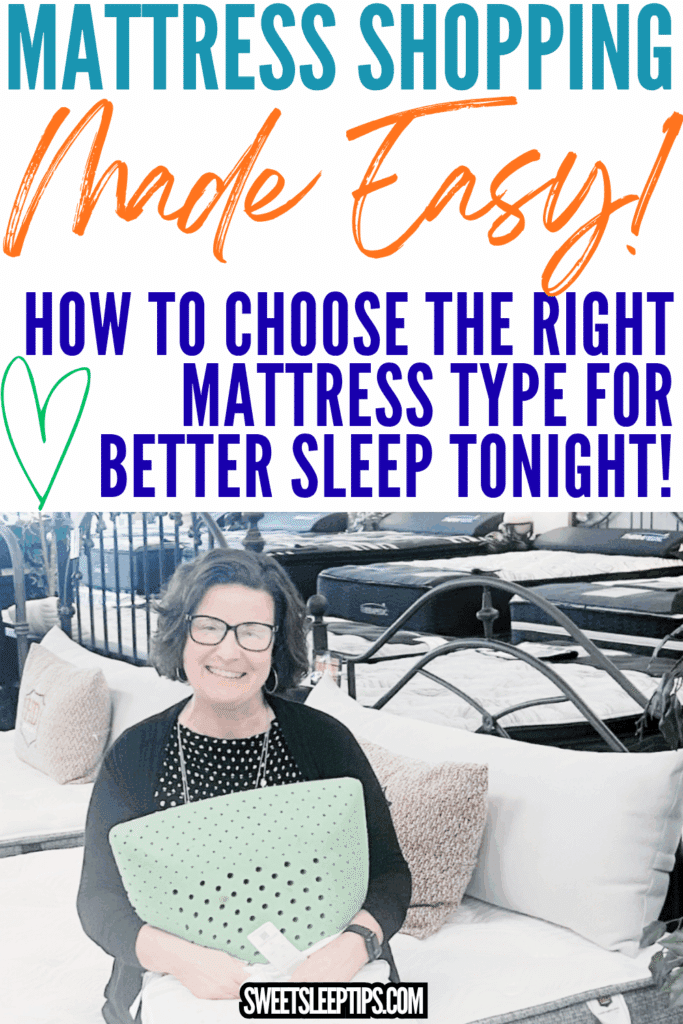








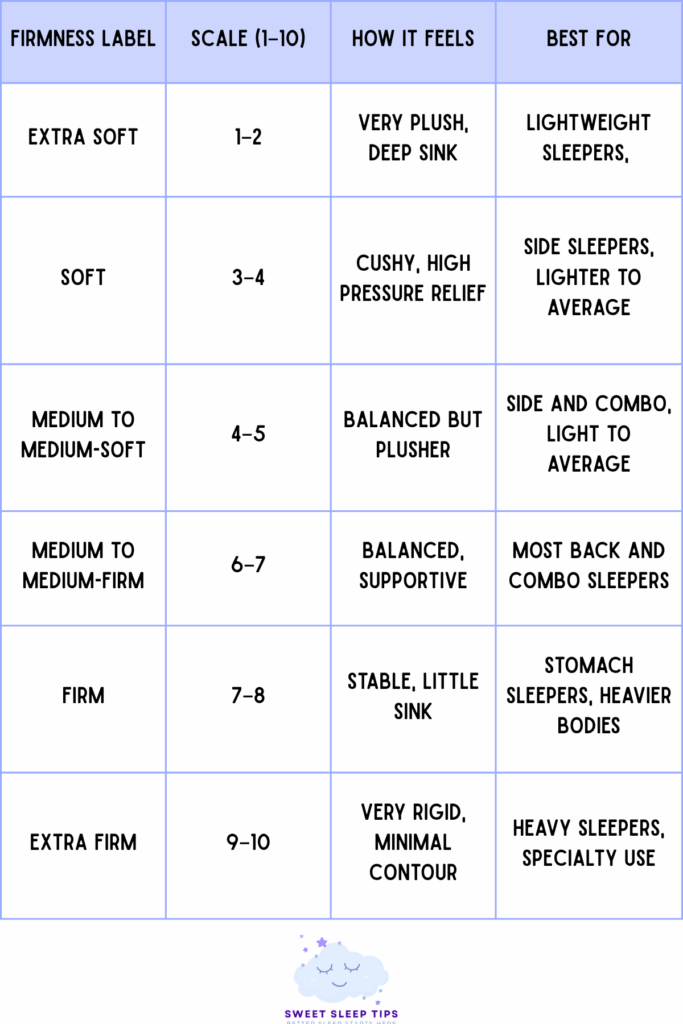


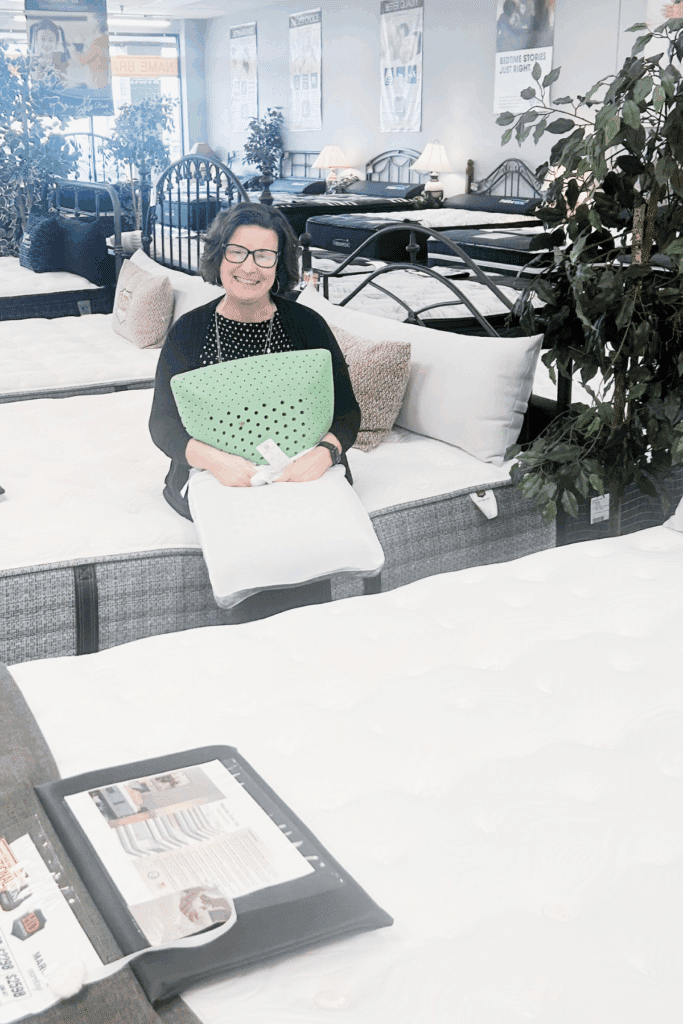

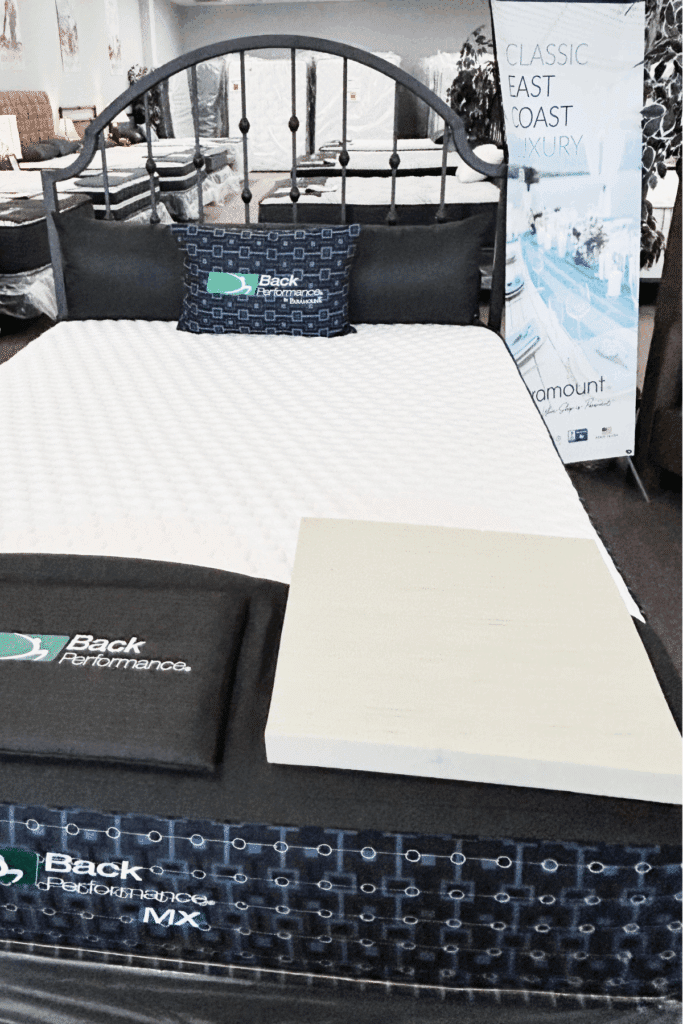

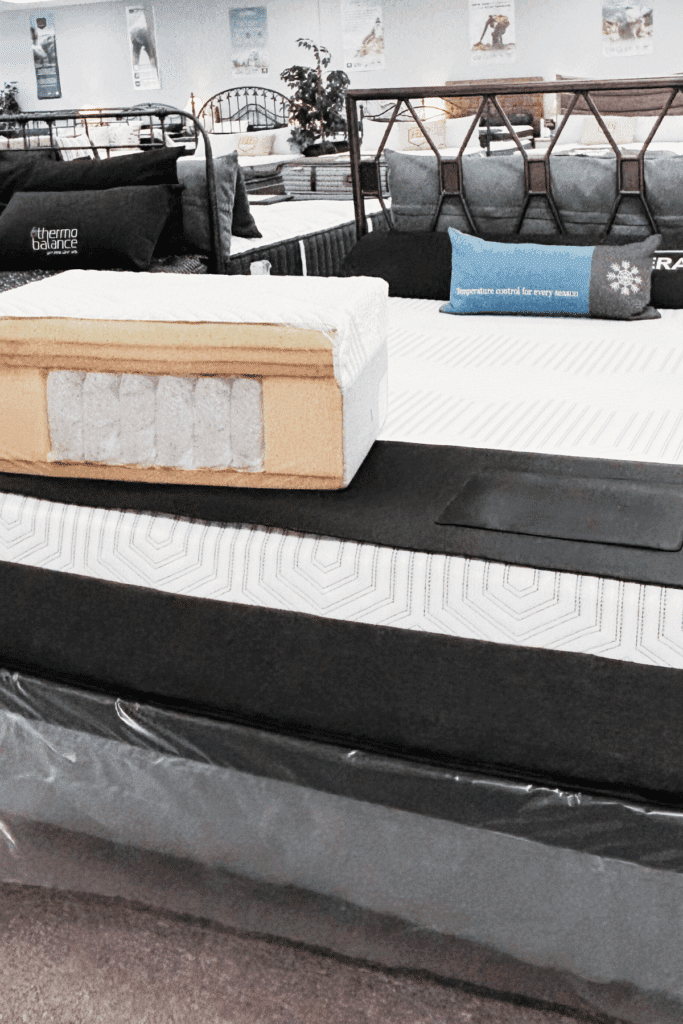
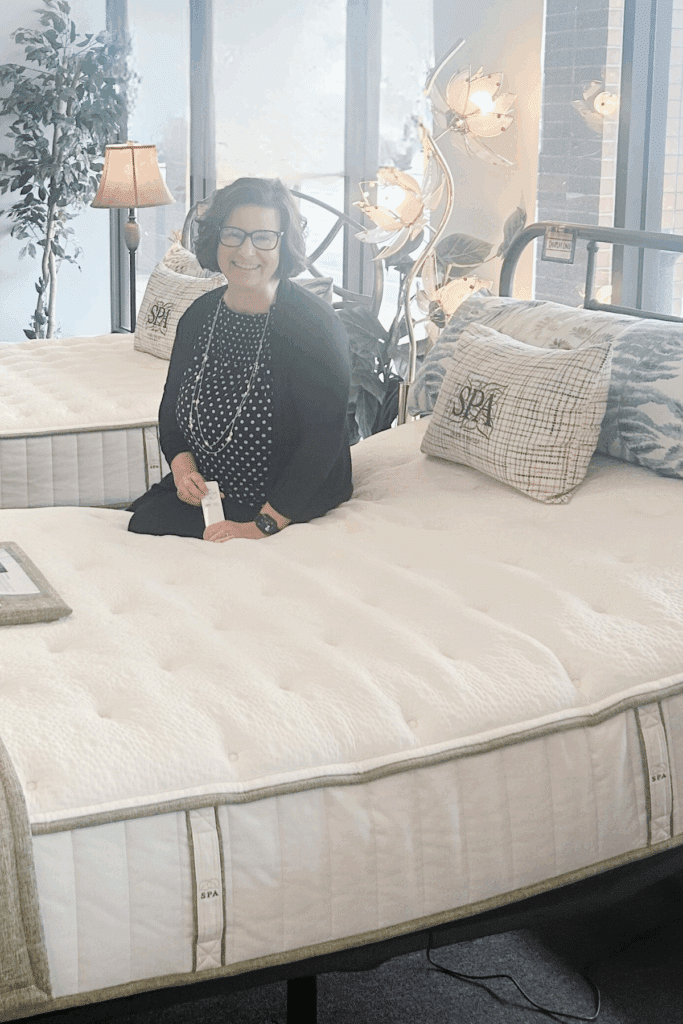
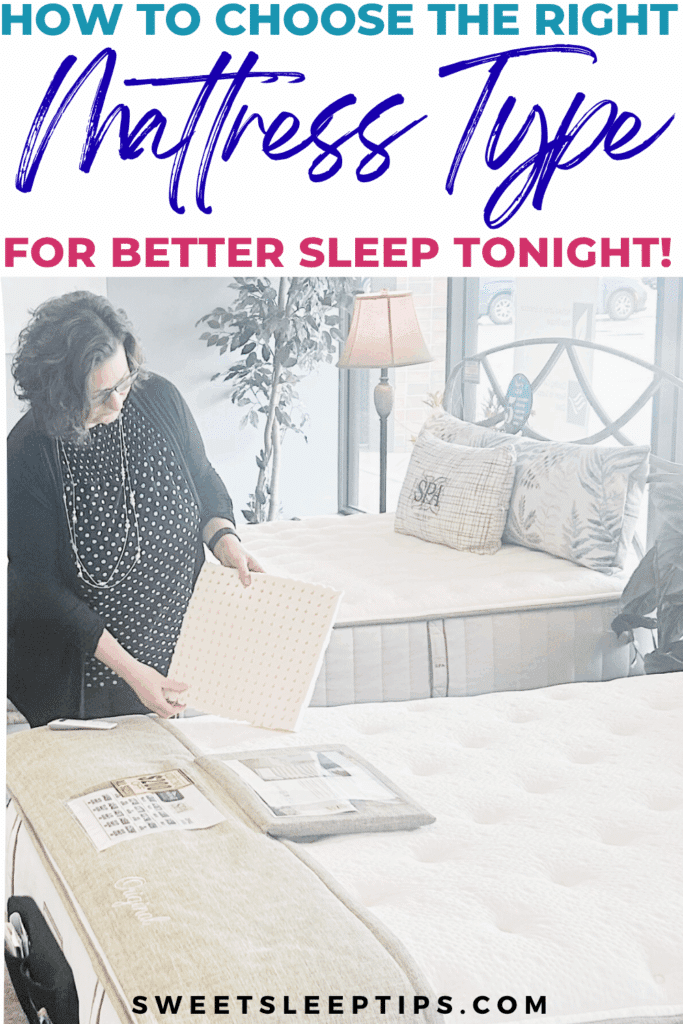

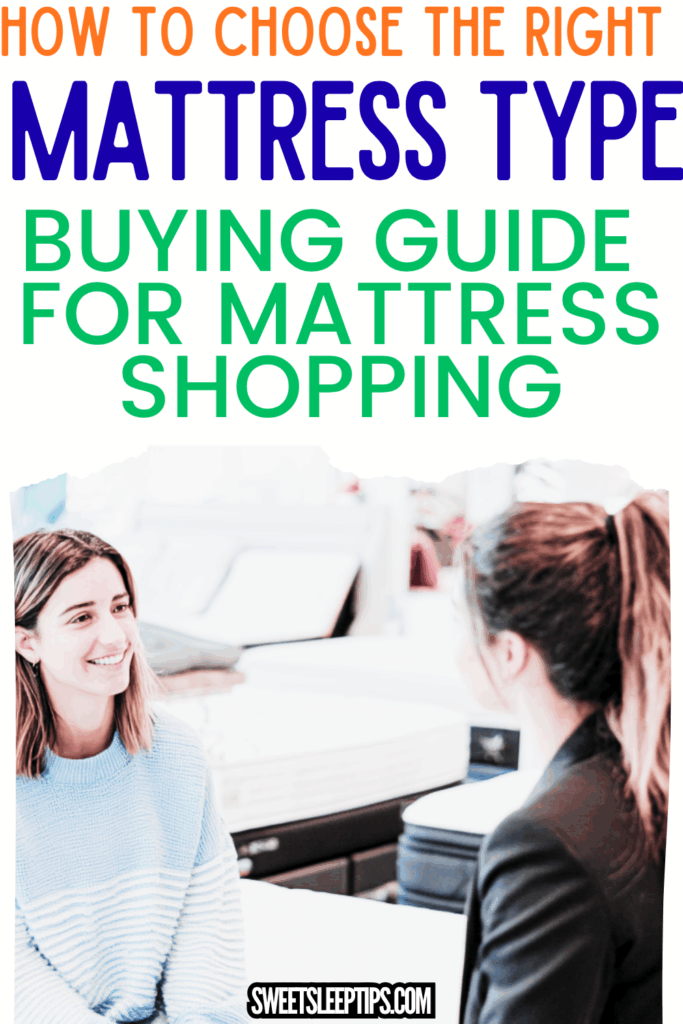





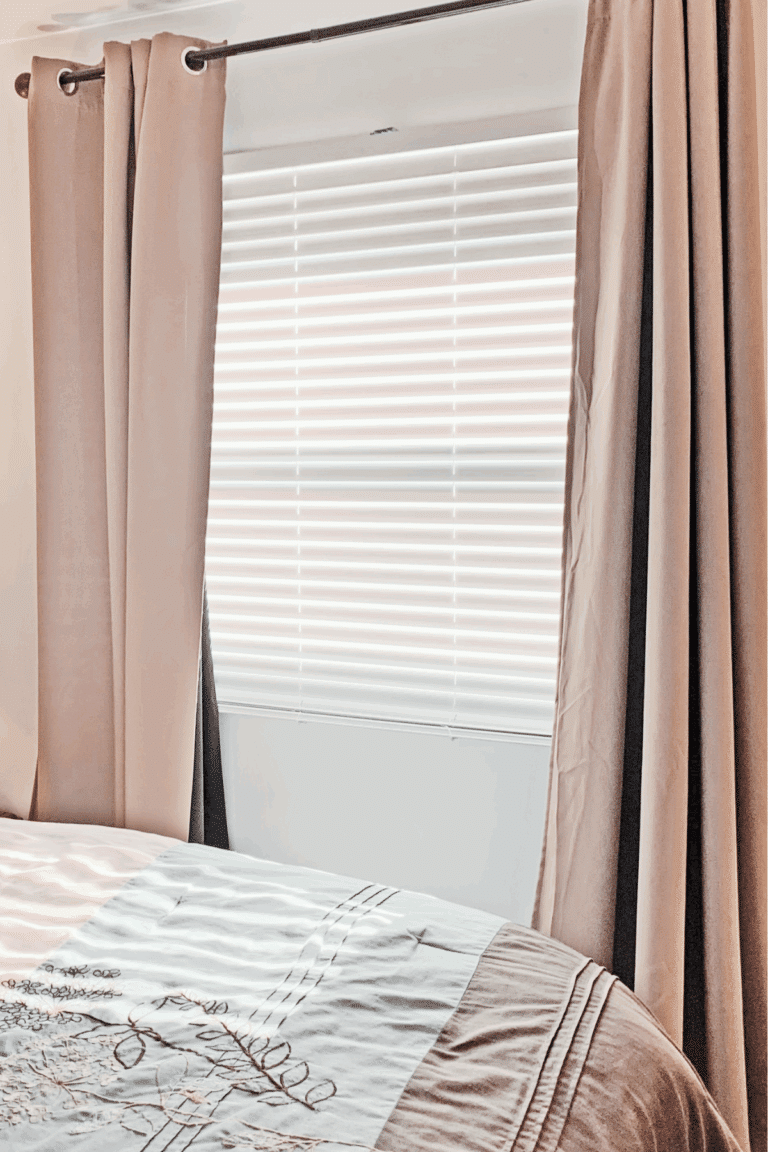

This was very helpful, especially since my back has been giving me trouble lately. Your mattress tips came at just the right time.
There are so many things to think about when picking out the right mattress and I love the sleep chart! My fur child is definitely by our side, so everything’s usually based on her comfort needs🤣 Thanks for this helpful post!
Thank you for these tips about how to choose the right mattress in 2025. I always appreciate your helpful charts and visuals. I’m always learning something new from you, like the existence of a super single or antique mattress size. Very informative!
Hi Lisa!
You are most welcome! I’m so glad you found the information on choosing the right mattress type informative and helpful!
Thanks for reading!
Debbie
Awesome tips for choosing the right mattress type! The breakdown of the different kinds of mattresses is super helpful.
Hi Crysti!
I’m so glad you found the tips on choosing the right mattress type helpful. I hope you enjoy your new mattress and sleep well!
Thanks for reading!
Debbie
I really need to get better sleep and ‘How to Choose the Right Mattress Type’ is so helpful. Thanks. I’m thinking a hybrid mattress.
Great insights! Really appreciate how you break down mattress types and how they affect sleep. Some solid points here to help me choose better for a deeper, more comfortable night’s rest.
This is such smart, practical advice. I really appreciate how you focus on the person first instead of the brand hype and that’s exactly how mattress shopping should be. And I have to say, I love that firmness chart you shared. It’s so helpful and makes the whole process way less confusing. Starting with how you actually sleep just makes everything click.